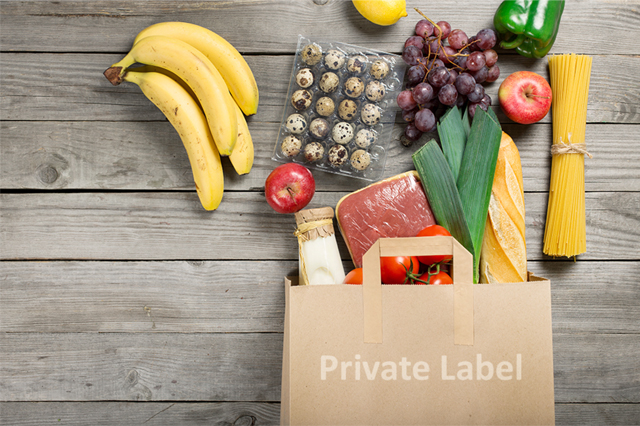
Web Developers
Private-label goods capture a minority share of the US grocery market, but there are five specific factors that could boost sales of these products:
Executive Summary
In US grocery stores, retailers’ private labels capture only a minority share of total grocery spending. Last year, private-label products accounted for just 14.5% of all US spending on consumer packaged goods (CPGs), according to research firm IRI. This equated to $115 billion of private-label CPG sales in the channels IRI tracked in 2016. Private label’s share of grocery sales is also much lower in the US than in comparable markets such as the UK, Germany and France. We see three reasons for this:- The presence of grocery discounters pushes up private label’s share of the total grocery market—and the US has a very small discounter segment relative to comparable markets.
- The US grocery market is unusually fragmented, and fragmentation inhibits the development of sophisticated, tiered and innovative private-label ranges.
- Walmart is by far the grocery leader in the US, and is positioned as a “house of brands.” This positioning is partly due to the fact that the retailer originated as a general merchandiser rather than as a food retailer.
- Rising food-price inflation in 2017. Private label performs more strongly in an inflationary environment because price increases tempt shoppers to trade down from branded products.
- Expansion of grocery discounters. Aldi is growing its US store numbers and Lidl has just entered the US market. Both are overwhelmingly private-label retailers. Their growth could lead to total US discounter private-label sales (grocery and nongrocery) of around $37.7 billion in 2020.
- Amazon-Whole Foods synergies. We expect to see the Whole Foods Market acquisition jump-start Amazon’s grocery private-label offering.
- Heightened consumer demand for more fresh, organic and natural foods. This demand can serve as a springboard for private-label growth, because private-label market share already overindexes in fresh food categories.
- Meal-kit market growth. Grocery retailers’ expertise in offering a very wide range of private-label food products across fresh and ambient categories means they are uniquely well positioned to capitalize on the meal-kit trend.
Introduction: Private Labels in US Grocery
Private labels allow shoppers to enjoy lower prices and retailers to enjoy fatter margins. They are a win-win offering—unless you happen to be a brand owner that is losing sales to retailers’ own labels. Despite their appeal, private labels make up only a minor share of the average grocery shopping basket in the US.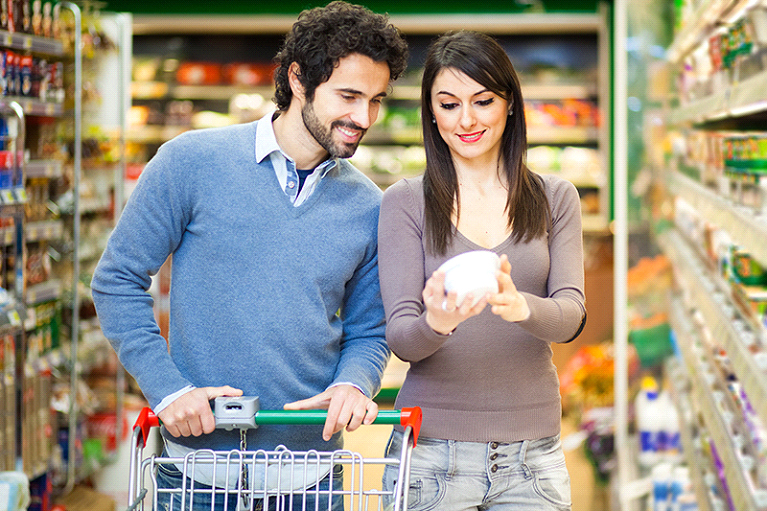
Source: iStockphoto
Private Labels Capture Just One Dollar in Seven Spent on Groceries
Americans will spend around $1 trillion on food, beverages and other grocery products this year. A large majority of that spending will flow to brand owners large and small. Last year, private-label products accounted for just 14.5%—or approximately one dollar in seven—spent on CPGs in the US, according to research firm IRI. This equated to $115 billion of private-label CPG sales in 2016, based on IRI’s total coverage universe, which includes most food store chains, mass merchandisers, warehouse clubs, dollar stores and drugstore chains, but excludes some chains and smaller retailers. According to figures from the Private Label Manufacturers Association (PLMA) and Nielsen, 2016 sales of private-label goods across all categories (including nongrocery) totaled:- $60.2 billion by supermarket retailers
- $49.6 billion by mass merchants, warehouse clubs and dollar stores
- $8.3 billion by drugstore chains
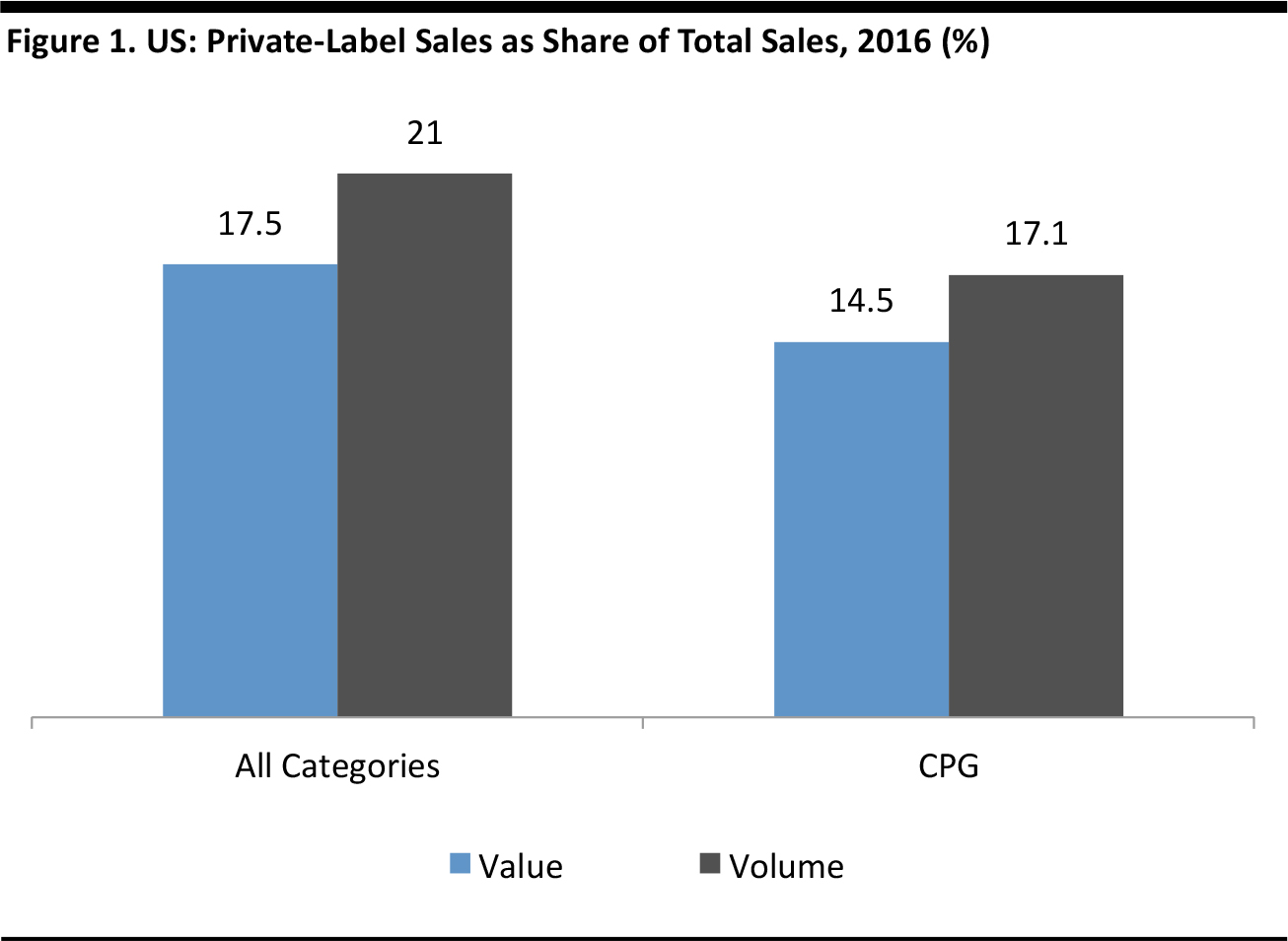
All categories data are for all products sold through tracked supermarkets, mass merchandisers, warehouse clubs, dollar stores and chain drugstores. CPGs data are for sales at tracked multioutlet and convenience stores, which totaled $795 billion in the 12 months ended September 22, 2016. Source: PLMA/Nielsen/IRI
Retailers that have built highly successful private-label ranges comfortably exceed these industry averages. Two examples are Costco and Kroger. Costco’s Kirkland Signature private label makes up about one-quarter of total company sales, per management statements. By value, Kroger sees private label capture a similar share, as shown below.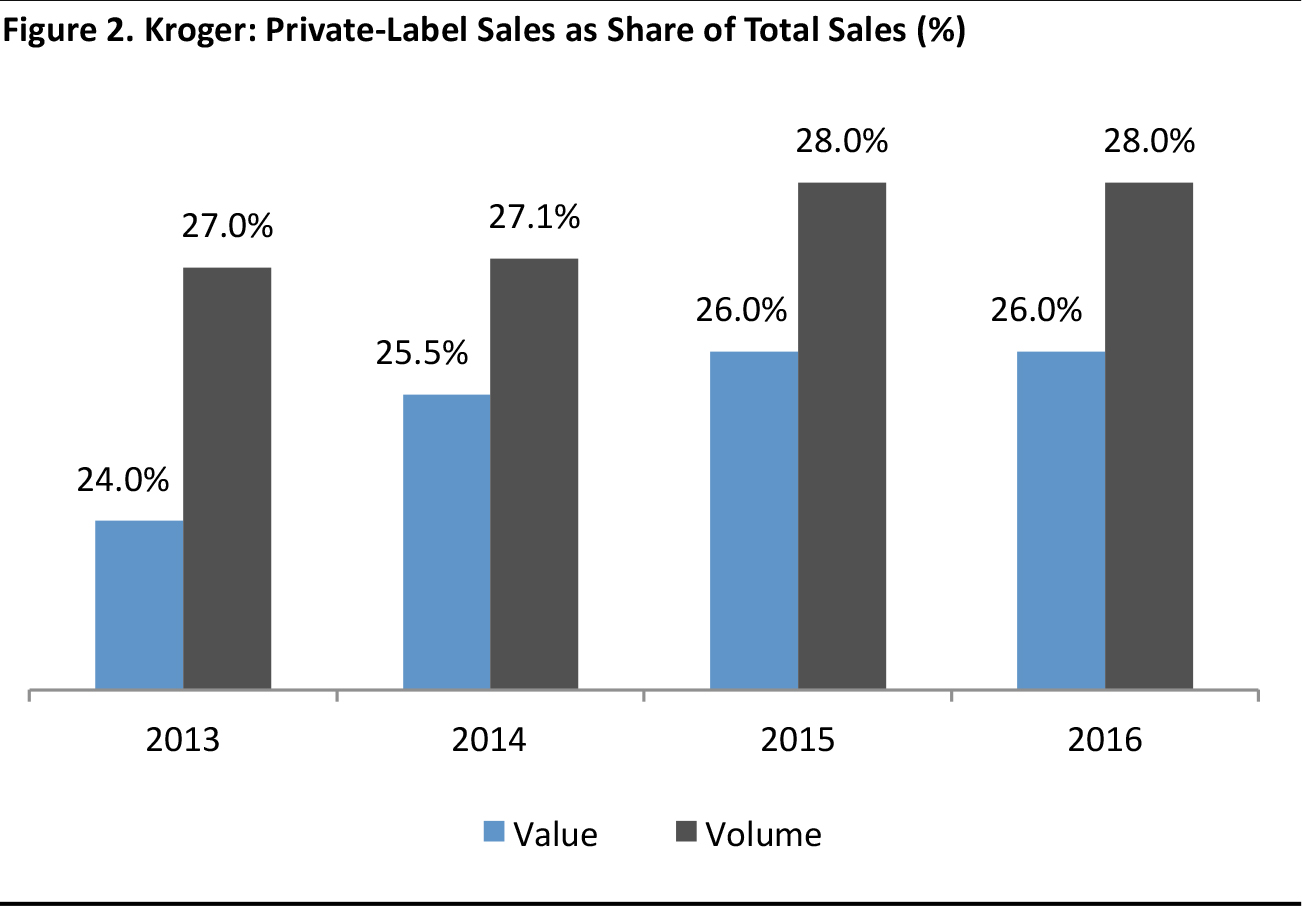
Share of Kroger sales excluding automotive fuel and pharmacy sales Source: Company reports
The US trails a number of comparable Western markets in terms of private label grocery penetration. France and the UK have grocery sectors that, like the US, are focused on large supermarkets and hypermarkets, yet private labels account for much higher shares of CPG sales in those countries.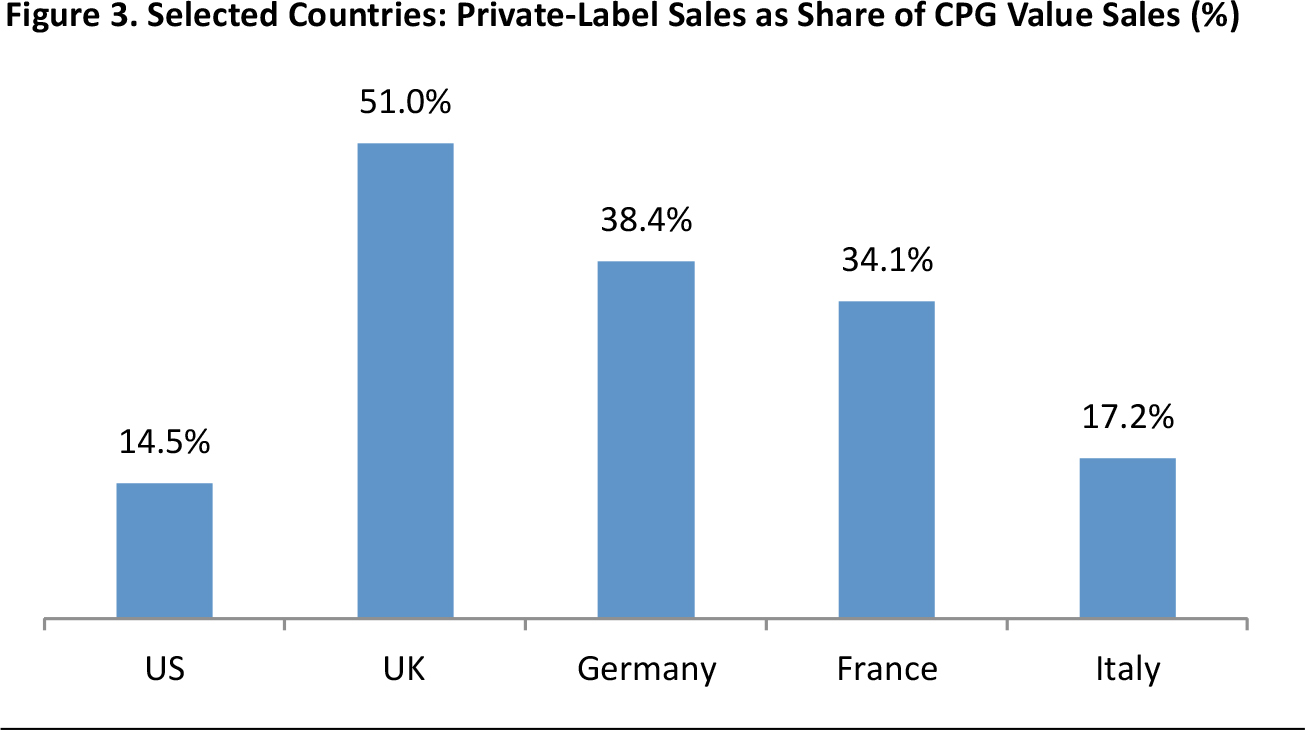
Data are for 2015, except for the US, which are for 2016, and the UK, which are as of July 2017. Italy data are for hypermarkets and supermarkets only. US data are for multioutlet and convenience stores. Source: IRI/Kantar Worldpanel
Three Reasons Private Label Captures Such a Small Share of Grocery Sales in the US
1. Private Label’s Share Is Distorted by Grocery Discounters .
The presence of grocery discounters such as Aldi and Lidl has a meaningful impact on private label’s share of a country’s overall grocery market. Compared with a number of European countries, such as Germany, the UK and France, the US has a minor hard discount sector. Aldi had just a 1.3% market share in the US in 2016, per Euromonitor International, and Lidl entered the US market only in the summer of 2017. This relatively small presence of hard discounters depresses private label’s share of the overall market in the US. However, once grocery discounters are stripped out, the major European economies see relatively similar levels of private-label share as the US does, at around one-quarter of CPG sales.
UK ex discounters data exclude Marks & Spencer as well as hard discounters. Data are for 2015, except for UK incl. discounters, which are as of July 2017. Source: IRI/Kantar Worldpanel
2. Private-Label Development Reflects Sector Concentration
The grocery sector is unusually fragmented in the US, with only two retailers enjoying double-digit market share. Walmart is by far the market leader in US grocery, with a 26% share in 2016, according to Euromonitor. Its closest competitor, Kroger, had a 10% share last year. This fragmentation limits the potential for tiered, innovative and well-known private labels that convince shoppers to switch from branded goods. In other markets, retailers with a very substantial market share have used their scale to develop sophisticated, tiered private-label ranges.
Source: FGRT
The correlation between private-label market share and degree of concentration in grocery retailing appears to be consistent across countries.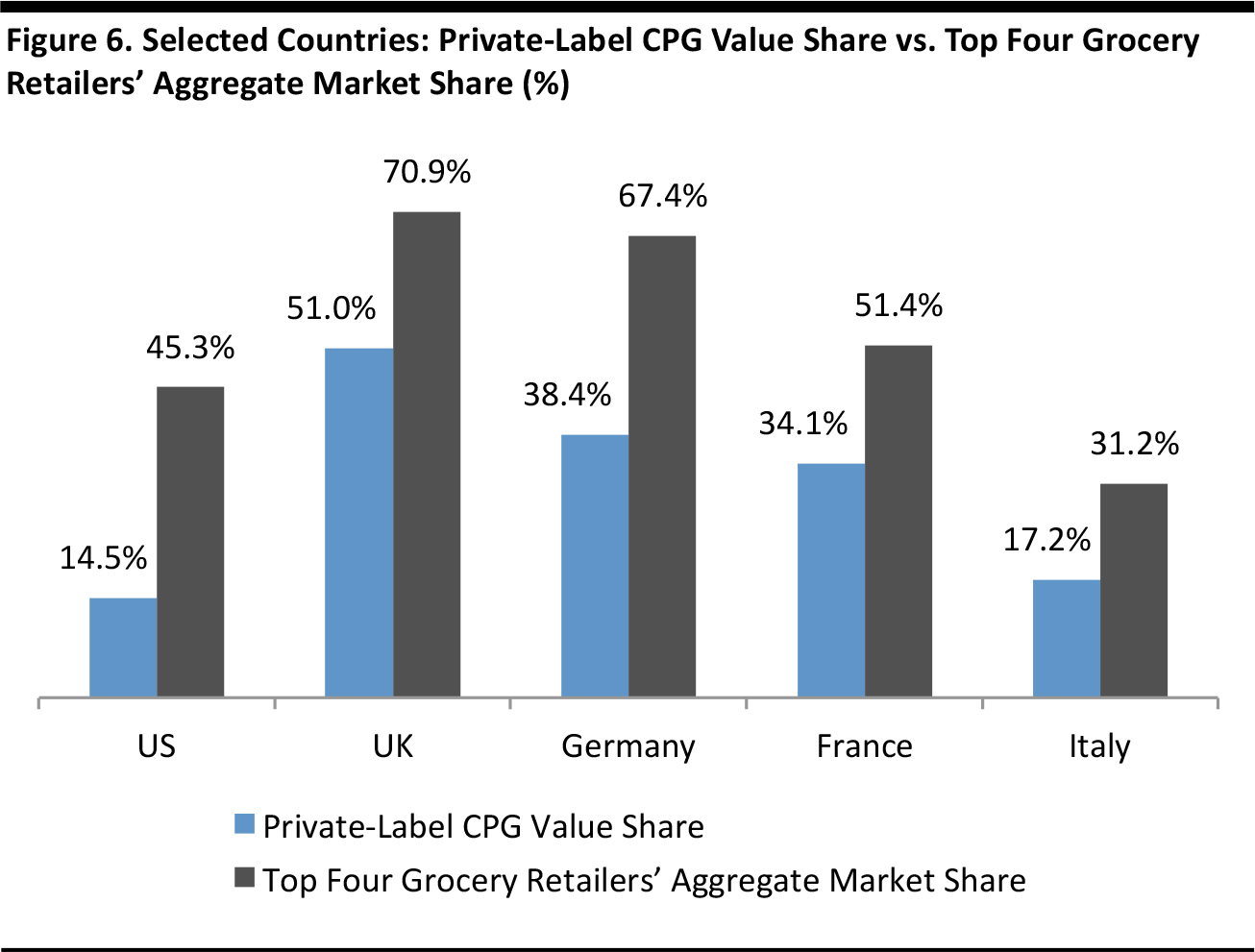
Source: PLMA/IRI/Kantar Worldpanel/Euromonitor International
3. Walmart Is a House of Brands
Market leader Walmart’s long-standing strategy to be first and foremost a house of brands appears to have limited private-label development in the US market. The company’s origins as a general merchandiser, rather than as a food retailer, naturally led to its more brand-focused positioning relative to many competitors in the grocery sector.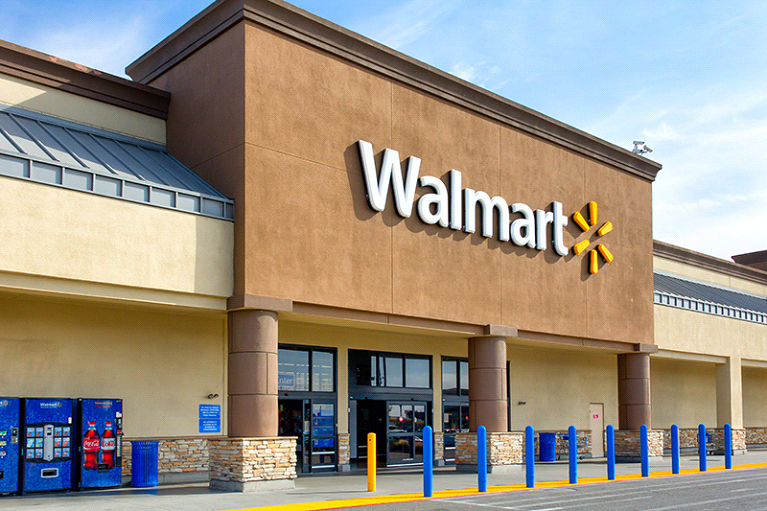
Source: iStockphotos
David Cheesewright, President and CEO of Walmart International, said in a June 2016 earnings call:If you started life as a food retailer, you view private label as the place you start, and brand is the thing that you only sell if you can’t create a proper private label. Because if a sign says we save people money, then why would you want to sell something that costs more for the same quality? If you start in general merchandise, I think you tend to view things as a house of brands. However, on an April 2015 earnings call, Walmart management said that it was the largest private-label player in the US.
Five Potential Drivers of Grocery Private-Label Growth
Private label is not a fast-growing segment in US grocery: in fact, in 2016, private label lost share of total US CPG sales, according to IRI. However, we see several tailwinds to growth, including the expansion of grocery discounters, innovation from Amazon and Whole Foods Market, and the popularity of meal kits.1. Rising Food-Price Inflation
Private label performs more strongly in an inflationary environment because price increases tempt shoppers to trade down from branded products. We think the very weak food-price inflation—and sporadic deflation—seen in the US in 2016 was a principal reason behind the above mentioned weakness in private-label CPG sales last year. In 2017, food and beverage price inflation has strengthened each month, climbing from deflation of 0.1% in January to inflation of 1.1% in August (latest), according to S&P Capital IQ and the US Bureau of Labor Statistics. Below, we chart the relationship between consumer prices inflation in food and beverages and the performance of private label relative to total grocery sales, according to IRI. The higher food-price inflation seen so far this year suggests improved private-label growth—and any further uptick in prices would likely benefit private labels.
*Through August 31, 2017 Source: S&P Capital IQ/IRI/FGRT
2. Grocery Discounters Set to Grow Rapidly
Germany’s Aldi and Lidl are set to grow their presence in the US market, which will boost total US private-label sales and likely spur some established rivals to strengthen their own private-label offerings. Around 90% of Lidl’s US product offering is private label, a company spokesman said in June 2017, and a similar proportion of Aldi’s US ranges are reported to be own brand goods. Lidl opened its first batch of US stores in mid-June 2017. The company had stated earlier that it intended to open 20 stores in the US over the summer across three eastern states: North Carolina, South Carolina and Virginia. When we checked the Lidl website on August 23, it said that the company was operating 22 stores in the US. We estimate that Lidl will grow its US presence to approximately 300 stores by the end of 2020 and generate almost $4 billion in US sales in that year.
Source: iStockphotos
Rival German discounter Aldi has been in the US for 40 years, but is now accelerating its expansion program. In June 2017, the company announced that it would invest $3.4 billion to grow its US store count from 1,600 to 2,500 by 2022.- Aldi’s US sales stood at $13.1 billion in 2016, according to Euromonitor, while rival Trader Joe’s turned over $13.4 billion.
- If Aldi and Trader Joe’s continue to grow revenues at the same pace as they did from 2011 through 2016 (per Euromonitor), they will generate sales of $19.5 billion and $18.6 billion, respectively, in 2020.
- Those sales, combined with Lidl’s estimated sales, suggest total US hard discounter sales of $41.9 billion in 2020.
- With private label accounting for approximately 90% of sales at these hard discounters, total private-label sales (including nongrocery sales) through discounters’ US stores could potentially reach $37.7 billion in 2020.
3. Amazon and Whole Foods: New Channels and New Products
We expect to see the Whole Foods Market acquisition jump-start Amazon’s grocery private-label offering. In August, Amazon announced that it would make Whole Foods’ private labels, including its 365 Everyday Value and eponymous Whole Foods Market labels, available for purchase on Amazon.com. By late September, many Whole Foods private-label products were offered to those shoppers able to purchase from the AmazonFresh service or through Amazon Prime. We expect to see the Whole Foods acquisition provide a particular boost to the fresh food ranges available through the AmazonFresh delivery service,as private label tends to overindex in fresh food categories.
Amazon also has the option to extend its own private-label grocery offering. Its still-small Wickedly Prime grocery range numbered just a few dozen products when we checked in late September. Amazon featured Wickedly Prime products prominently during its July 2017 Prime Day event.
Other Internet-only retailers are pushing into private-label groceries, too. In late September 2017, Walmart-owned Jet.com announced that it would be launching a new private label, Uniquely J, across a range of nonperishable items such as laundry detergent, coffee and olive oil.
We expect to see the Whole Foods acquisition provide a particular boost to the fresh food ranges available through the AmazonFresh delivery service,as private label tends to overindex in fresh food categories.
Amazon also has the option to extend its own private-label grocery offering. Its still-small Wickedly Prime grocery range numbered just a few dozen products when we checked in late September. Amazon featured Wickedly Prime products prominently during its July 2017 Prime Day event.
Other Internet-only retailers are pushing into private-label groceries, too. In late September 2017, Walmart-owned Jet.com announced that it would be launching a new private label, Uniquely J, across a range of nonperishable items such as laundry detergent, coffee and olive oil.
4. Demand for Fresh, Organic and Natural Foods
Grocery retailers are seeing a steady, incremental consumer shift toward fresh, organic and natural foods and away from packaged, processed products. This is a trend we have discussed at length in several previous reports focusing on, respectively, millennials’ grocery shopping behavior, growing consumer demand for healthier foods and major food companies’ responses to consumers’ shifting grocery preferences. US organic food sales jumped by 8.4% in 2016, according to the Organic Trade Association. This compared with a 1.8% increase in total food and drink spending in 2016, per the US Bureau of Economic Analysis. The Organic Trade Association said that this strong performance led to organics accounting for more than 5% of total food sales in the US for the first time. Consumers’ shift to natural and organic foods can serve as a springboard for private-label growth. Private-label goods already overindex in terms of market share in fresh food categories, as we show below. Fruit and vegetables, fish, meat, and dairy products are typically commodity goods rather than brand-led categories, and this boosts private label’s share of sales in those categories.
Source: iStockphoto

Source: IRI
A number of retailers have led the way in developing natural or organic ranges. Aside from Whole Foods Market, Kroger is a prominent example: its Simple Truth range, which focuses on natural and organic products, racked up sales of $1.7 billion in 2016, and Kroger states that it is the biggest natural and organic brand in the country by volume. We think the strength of private label in fresh foods gives retailers a naturally strong position from which to develop natural and organic ranges. Moreover, because the US grocery market is fragmented, the relatively few retailers that have substantial scale have the chance to run with the baton, and gain a head start on both brands and smaller retailers.5. Riding the Meal-Kit Trend
Meal kits are the trend du jour in grocery e-commerce and they are now moving into stores such as Kroger and Albertsons, too. Brands such as Blue Apron and Plated offer consumers all the ingredients they need in one kit to create selected meals. Whether consumer demand for these kits will remain robust over the medium is uncertain. We think the typically high prices of such meal kits, coupled with the growth of more conventional grocery ecommerce in the US market, could depress category performance.
Source: Plated.com
Nevertheless, there look to be near-term opportunities to tap this market. Grocery retailers have expertise in offering a very wide range of private label food products across fresh and ambient categories, which means they are uniquely well positioned to capitalize on the meal-kit trend.- Kroger launched its own range of meal kits under the Prep+Pared private label in May 2017. In September, Kroger announced that it was extending its Prep+Pared offering to more than 50 stores across two cities—Cincinnati, OH, and Louisville, KY—and its Ralphs supermarket chain.
- In September 2017, privately owned Albertsons announced its acquisition of meal-kit firm Plated. News site TechCrunch.com reported the deal to be worth between $175 million and $200 million.
- Amazon launched its Meal Kits range in July 2017.
- Blue Apron is the biggest non-private-label US meal-kit brand. We see barriers to entry for further entrants in the category, however, as successful businesses in the sector need experience in sourcing a wide range of foods—from fresh meat to vegetables to prepared cooking sauces—at scale.

Source: Blueapron.com
Beyond meal kits, e-commerce provides further pockets of opportunity to boost private-label sales. Online retailers have more control over what shoppers see, and what they recommend to shoppers, than do offline retailers, as in-store shoppers are presented with aisles of competing products in physical stores. Retailers can use that power to push their own products and encourage their customers to switch from brands to private labels.Key Takeaways
Retailers can take advantage of several tailwinds to boost private-label grocery sales:- Higher inflation in food prices this year than last year.
- Consumer demand for more fresh, organic and natural options.
- The popularity of meal kits and consumers’ shift to e-commerce.